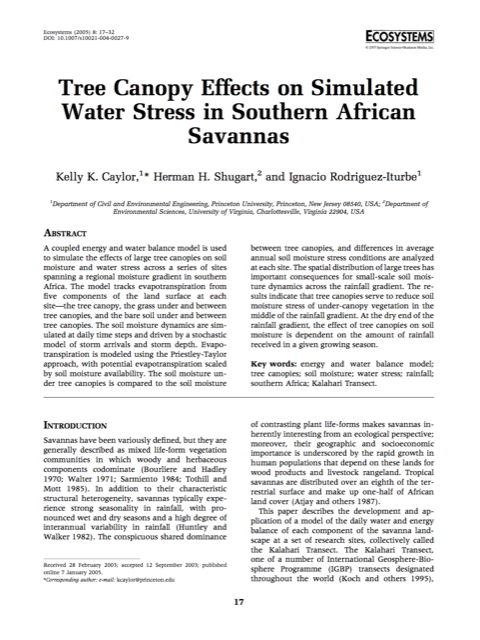Tree canopy effects on simulated water stress in southern African savannas

Caylor, K.K., H.H. Shugart, I. Rodriguez-Iturbe (2005) “Tree canopy effects on simulated water stress in southern African savannas.” Ecosystems, 8(1):17-32.
A coupled energy and water balance model is used to simulate the effects of large tree canopies on soil moisture and water stress across a series of sites spanning a regional moisture gradient in southern Africa. The model tracks evapotranspiration from five components of the land surface at each site-the tree canopy, the grass under and between tree canopies, and the bare soil under and between tree canopies. The soil moisture dynamics are simulated at daily time steps and driven by a stochastic model of storm arrivals and storm depth. Evapotranspiration is modeled using the Priestley-Taylor approach, with potential evapotranspiration scaled by soil moisture availability.
The soil moisture under tree canopies is compared to the soil moisture between tree canopies, and differences in average annual soil moisture stress conditions are analyzed at each site. The spatial distribution of large trees has important consequences for small-scale soil moisture dynamics across the rainfall gradient. The results indicate that tree canopies serve to reduce soil moisture stress of under-canopy vegetation in the middle of the rainfall gradient. At the dry end of the rainfall gradient, the effect of tree canopies on soil moisture is dependent on the amount of rainfall received in a given growing season.
